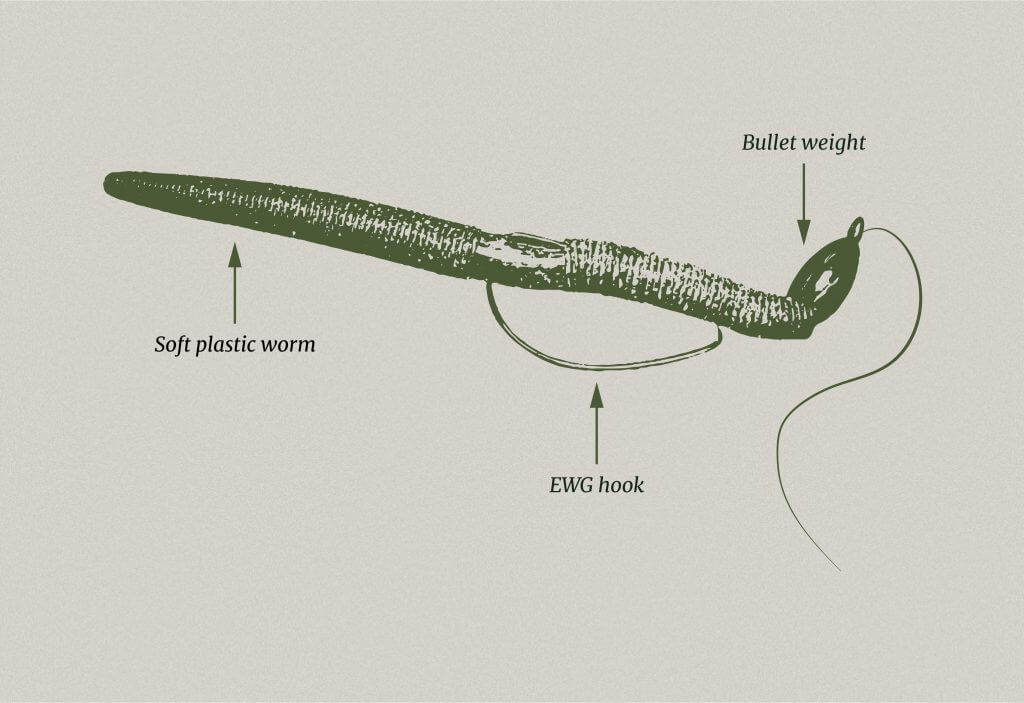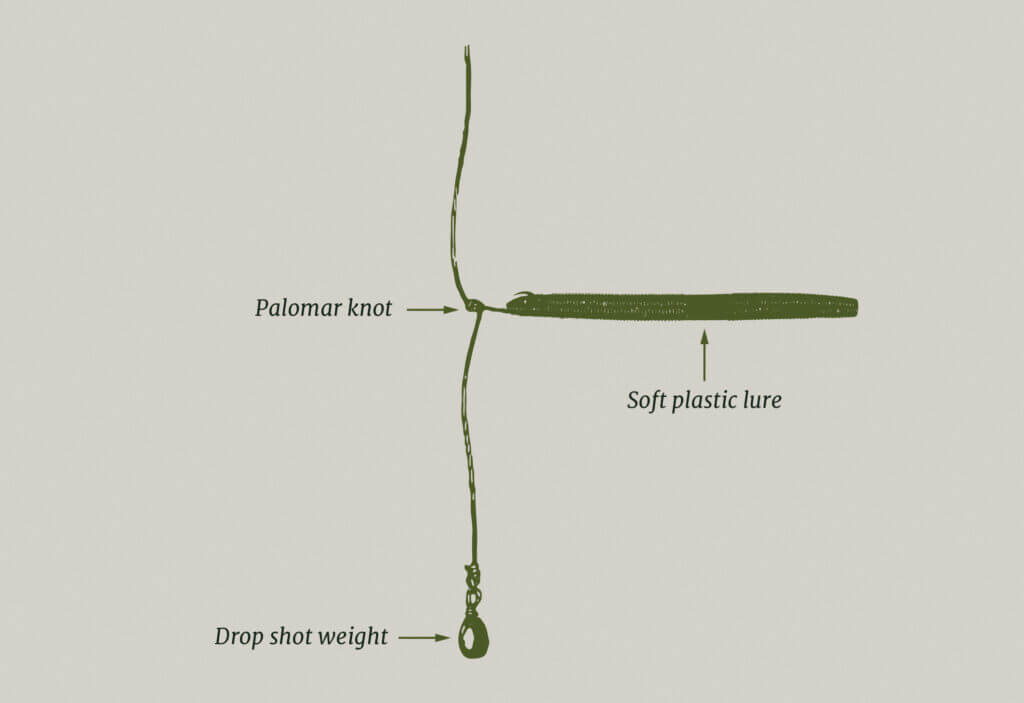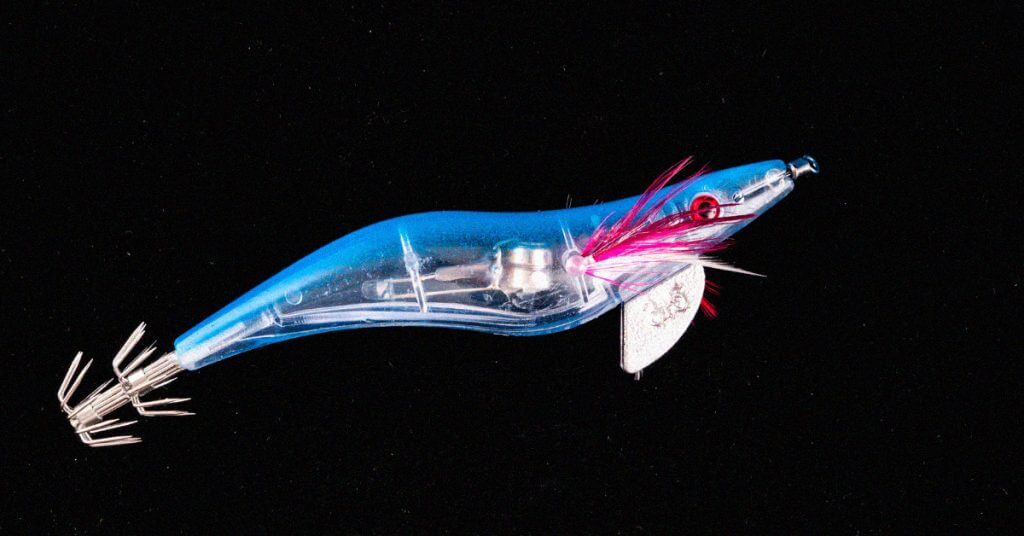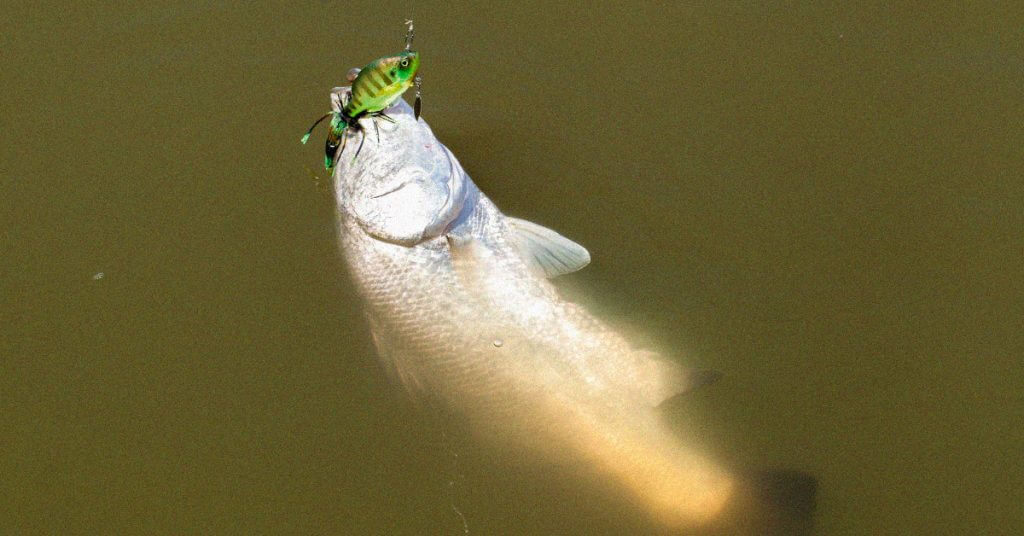If you’re looking for a lure with a lot of versatility to catch bass with, the Yamamoto Senko is your answer.
Arguably the most versatile lure out there, if you want to take your angling skills to the next level, there’s no better place to start than learning how to rig a Senko.
From lakes in Canada to ponds in Florida, this soft plastic stick bait has proven itself to be an effective solution for anglers of all skill levels and experience.
Even though it doesn’t look like anything special, just a worm. Its lifelike motion makes it irresistible to bass.
The Senko’s weighted body allows it to sink through the water with ease, making it one of the most popular options for catching panfish, trout, catfish, largemouth, and smallmouth bass.
Table of Contents
Best Ways to Rig a Senko for Bass Fishing
Anglers.com Content Creator Wes Littlefield teaches us how to rig a Senko 5 different ways!
There are five main ways to rig a Senko: weightless and weighted Texas rigged, wacky rigged, Carolina rigged, and Neko rigged.
Each Senko rig setup has its own advantages when it comes to presentation. No matter which you choose, start by letting your bait fall all the way to the bottom on the initial cast, then inch it slowly along the bottom.
With the weightless versions, many bites occur during the fall before it hits bottom. With the weighted versions, most bites come as the bait gives off vibrations while crawling along the lake floor.
Senko Wacky Rig

The wacky rig Senko is a super simple way to fish anyone can pick up the technique quickly.
It requires very little in terms of equipment or preparation, just a hook and a “wacky worm” through its middle.
While it’s especially effective during the spawn and post-spawn months, it can be used anytime.
When it comes to what hooks you want, the Owner Mosquito Hooks, both five and six inches rock for the wacky rig and other finesse techniques.
The bent-down eye allows for the hook to come off the line at an angle, exposing the hook point for enhanced hook sets when you get a bite.
Plus, these hard, fine wire hooks provide a super sharp point, meaning it’s able to hook deep in the bass, so you don’t have to worry about losing the bass during retrieval.
The Wacky Saddle is better than your typical O-Ring because it’s easier and more secure. The Wacky Saddle offers better presentation, fewer lost baits, and an improved hook-up ratio.
Weightless Texas Rigged Senko
The weightless Texas-rigged Senko is perfect for fishing shallow water weed beds, pads, brush, and under docks; this rig consists of back-to-back components in a three-part system.
Once rigged up, the lure will effortlessly sink through the water column and entice those lunker bass lurking beneath the heavy cover.
Hooks that work well for this rig setup are the Gamakatsu EWG. These hooks have a really wide gap, so it’s easier to hook a bigger bate.
One problem I’ve run into fishing big plastics can be tricky, especially when it comes to getting the hook to go through the entire cross-section of the bait.
Regular Texas rigs often don’t penetrate thick plastics enough, leaving you with missed fish and lost baits.
Consider giving Gamakatsu’s Extra Wide Gap hooks a try – they are designed to push the point of the hook through for a more secure connection.
Weighted Texas Rig

The weighted Texas rig consists of three components: a bullet weight, an offset shank EWG hook, and a Senko.
The bullet weight helps penetrate dense cover and maintain contact with your lure but always opt for the lightest weight possible.
Consider using a light flippin or heavy punching rig.
The light flippin setup consists of a 3/16 ounce Tungsten weight, offset shank EWG hook, and Senko, while the heavier punching rig has a 1 1/2 ounce Tungsten weight, offset shank EWG hook, and Senko worm.
With the lighter weight, you’ll get better penetration through dense cover with more finesse. However, the heavier weight will help cast further and sink quickly when faced with deep water or thick vegetation.
Carolina Rig Senko

The Carolina rig is similar to a Texas rig but with the sinker weight fixed well above the hook instead of sliding down. It’s perfect when you want to target bottom-feeding fish in deep water.
Once you have your rig set up, cast it out and allow the bait to drop until it hits the bottom. Then, slowly inch it along and wait for the strike.
Neko Rigging

Neko rigging is a practice is similar to a wacky rig, with one end of the soft plastic bait having a weighted insert so you can fish the bottom of the lake.
This gives the bait its unique movement while it’s falling from the drop shot and provides an upright presentation once it hits the bottom.
When you add a nail weight to your worm, you’ll notice that the rate of fall and action change.
Skipping docks is also made easier since the tungsten weights are more compact than their lead counterparts, meaning you can add a heavier weight to smaller worms for the most finesse presentations possible.
Dropshot Rig

To fish a Senko with a dropshot rig, attach the weight to the end of your line and tie the hook a short distance above it, using a Palomar Knot, leaving a tag end.
Then, run the line back through the eye of the hook so that the hook stands out straight and presents the bait in a natural way.
This setup places the weight at the bottom and the Senko above it, allowing for a finesse presentation. It’s important to adjust the weight of your dropshot rig based on the depth of the water you’re fishing in.
Generally, the deeper the water, the heavier weight you’ll want to use. Additionally, wind conditions can affect your sensitivity during the retrieve.
If there’s a lot wind, your line may develop a prominent bow, reducing your ability to detect bites even if you’re using a low-stretch braided line.
If this is the case, upsize your dropshot weight to increase your sensitivity and maintain control over the presentation of your bait.
For the dropshot to be most effective remember to fish it in clear water and in a weedless area if possible, since it drags on the ground.
Frequently Asked Questions About Rigging a Senko
Do you put a weight on a Senko?
You do not have to put weight on a Senko, it is personal preference.
Some anglers prefer the added weight for getting down to the depths, while others opt for a weightless rig with the bait going directly onto the hook.
What weight do you use for a Senko?
You want to use the lightest weight possible for a Senko. Doing so helps preserve the bait’s action and allows for more natural movement in the water.
Additionally, using lighter weights will give you better feel for when fish bite, allowing for a quicker hookset.
Final Thoughts on How to Rig a Senko
When it comes to rigging a Senko for bass fishing, there are a few things to keep in mind.
It can easily be adapted for various bodies of water and stands out as an attractive lure to bass and other fish species. Despite its smaller size, it has the ability to incentivize and entice big fish into taking a bite.
To get the most out of your bait, there are a few rigging options to consider: weightless, lightly weighted, T-rigged, Texas rigged, or split shot rigged.
That’s all you need to know when it comes to how to rig a Senko.
If you’re ready to give it a try, don’t pass up on our rig suggestions above, which will help you be as successful as possible with this soft-plastic, and download our Ebook to always know which lure to throw.




